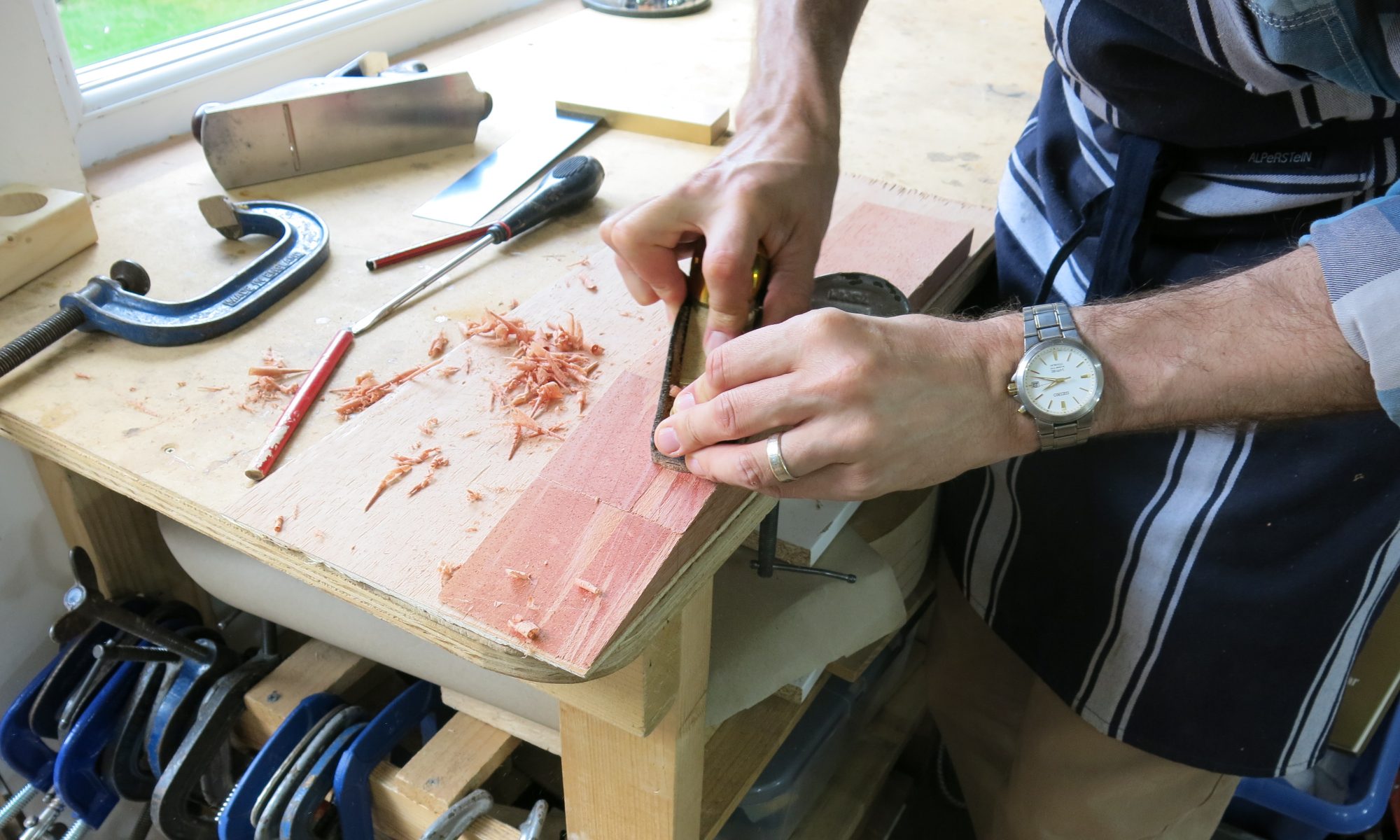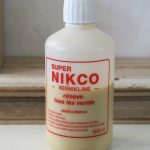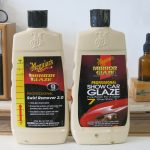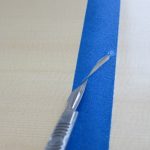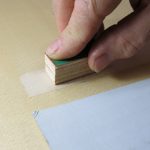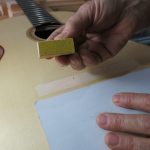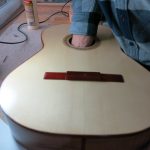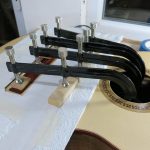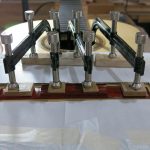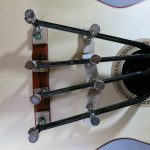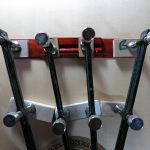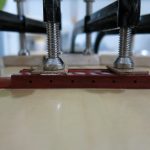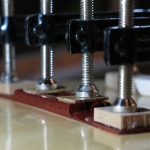During the week, I completed five sessions of polishing and went to see Roy for a couple of hours today to check on progress and, if all was well, glue the bridge on. I was pleased with the results of the polishing and so was Roy, so he proceeded to talk me though the next stages of final polishing and burnishing.
He explained that for the final polishing, I should use a more diluted shellac solution with about three drops of shellac, six drops of meths and one drop of oil on the rubber and rub more quickly than previously. To judge the effectiveness of the polishing, he showed the reflection of the light bulb on the wood: the more highly polished, the sharper the ‘focus’ of the reflection of the bulb. For the burnishing, Roy said I had to wait at least week for the shellac to harden before starting. He recommended ‘Super Nikco’ cream and cotton wool and said that some luthiers use ‘Meguiar’s Mirror Glaze’ #7 & #9 instead. He then showed me an example of a highly polished and burnished piece of walnut; it reflected the bulb in sharp focus, to the extent that we could read the text printed on the bulb in the mirror finish of the wood. Roy reminded me that the final finish is a matter of taste and that a deep, mirror finish is not necessarily what everyone wants and can obscure the natural features of the wood with a highly reflective surface.
I intend to give the guitar one more session of bodying up with the bridge on and then move on to the final polish and burnish.
Following this, we set to work on gluing the bridge which was nerve-wracking but I learned a lot in the process. First, I removed the tape from the soundboard using a scalpel to get started and then with a small hard block and 100 grade paper, I carefully sanded over the surface.
Likewise, I removed the tape from the underside of the bridge and then, using a finer grade paper, I ensured it was clean, too.
Next, we started the dry run of clamping the bridge to the soundboard. Several weeks ago, I had made a caul to fit over the lattice bracing but when it came to using it, I realised it didn’t fit tight enough over the lattice, such that it wouldn’t stay in place to allow for the clamps to be fitted. I tried, several times, to use blue tape to stick it in place, but that didn’t work either. Of course, Roy’s bridge cauls fit snugly without tape. In the end, I just used a flat piece of 6mm MDF slightly larger than the area of the bridge and because it was lighter than the original caul, the tape held it in place over the 36x36mm series of lattice boxes. The MDF worked well and I’m inclined to do the same again next time rather than cut out an elaborate caul that is used only once.
As usual, we rehearsed the whole gluing process. Two small, slightly concave cauls are placed on the wings and two flat cauls on the saddle area; pencil erasers support the stabilisers at the back of each clamp.
We then brushed glue onto both the bridge and the soundboard. A thin coat on each fully covering every area was sufficient and produced just a little squeeze-out. Enough to feel the amount of glue was right and not create a mess. We cleaned up with damp brushes and checked that all surfaces were in contact.
We waited a little longer to see if any more glue squeezed out (not much, but worth waiting for!).
I took my guitar home and will remove the clamps after 24 hours, then get back to polishing.
Today corresponds to Roy’s book p.299.
